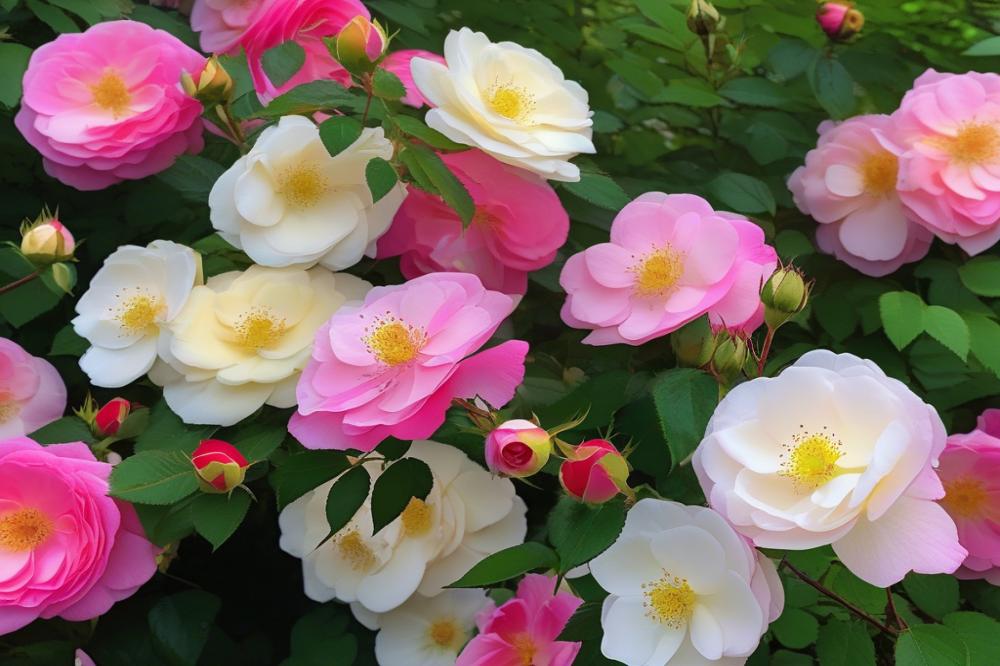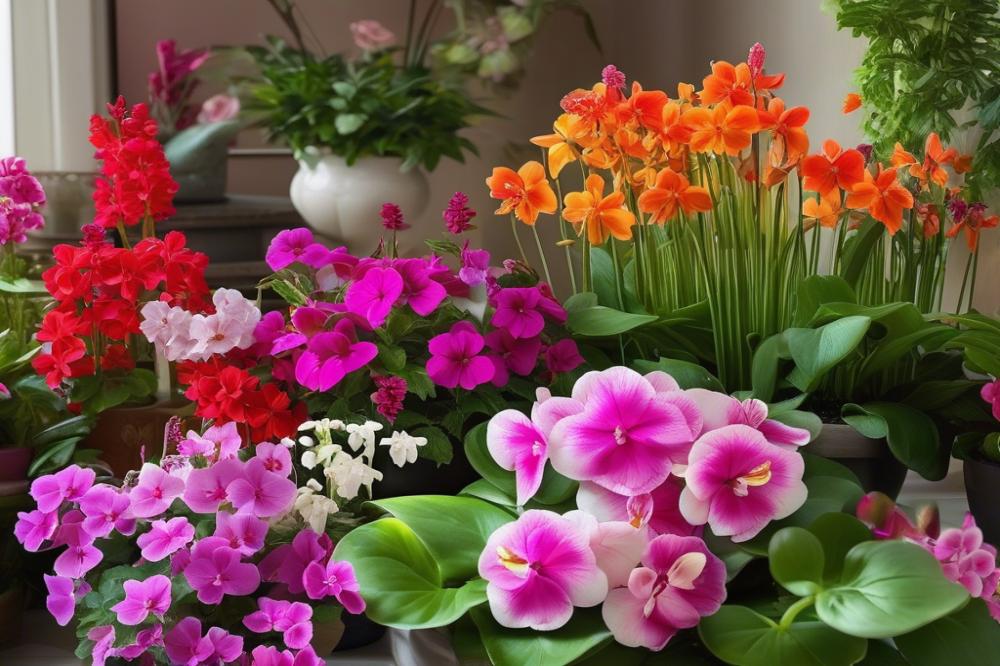Overview of wild roses and Their Benefits
Growing wild roses in your backyard offers many advantages. These flowering shrubs are not only beautiful, but they also bring a plethora of benefits to your garden and the environment. Their vibrant blooms add color, charm, and fragrance, making any outdoor space more inviting. More importantly, these plants are drought-resistant, requiring less water once established compared to traditional garden flowers. This aspect is particularly valuable during dry spells.
cultivation of these resilient plants supports local ecosystems. They serve as a food source for various birds, bees, and butterflies. A thriving wildlife garden attracts these creatures, promoting biodiversity. Moreover, native plants like wild roses can improve soil health. Their deep roots stabilize the ground and prevent erosion, enhancing your backyard landscape.
Planting and caring for such beautiful blooms is not overly complicated. With proper soil preparation and maintenance, you can enjoy their elegant presence for years. Pruning them helps encourage new growth and flowering, allowing your plants to flourish. By incorporating these roses into your backyard gardening plans, you take a significant step toward creating a harmonious space that supports nature and provides beauty. Establishing this connection with the environment helps foster a greater respect for wildlife and encourages sustainable gardening practices.
Understanding Wild Roses

Wild roses are remarkable plants known for their beautiful blooms and resilience. These flowering shrubs often grow in various environments, thriving in different types of soil. They usually display delicate pink or white flowers, which add charm to any backyard. Their natural growth habit can create an attractive, inviting landscape.
Characteristics of Wild Roses
What makes these plants stand out? One significant trait is their adaptability. Wild roses can survive in less-than-ideal conditions, making them perfect for many gardeners. Their thorny stems provide an extra layer of protection against pests. Additionally, they often feature glossy green leaves that enhance their visual appeal.
Varieties of Wild Roses
Several different varieties exist, each with its own features. One popular type is the Rosa rugosa, known for its fragrant flowers and thick foliage. Another option is the Carolina rose, admired for its softly colored blooms and ability to attract pollinators. Exploring these varieties can lead you to find the perfect match for your garden.
Benefits of planting Wild Roses
Choosing to plant these native plants offers several benefits. First, they are drought-resistant, requiring less water once established. This characteristic makes them an excellent choice for eco-conscious gardeners aiming for sustainability. Second, wild roses contribute to a wildlife garden by attracting bees, butterflies, and birds. These creatures play vital roles in the ecosystem, helping to pollinate other plants.
Aside from ecological benefits, wild roses require minimal care and maintenance. A simple pruning routine in early spring encourages healthy growth and blooming. With proper soil preparation, they will flourish and create a stunning display. The joys of cultivation can be immense when watching these beautiful roses thrive in your backyard.
Soil Preparation for Wild Roses

Healthy growth begins with quality soil. To create a thriving environment for your flowering shrubs, you’ll need to pay attention to several key factors. Adequate nutrients, drainage, and pH level play significant roles in cultivation.
When it comes to soil types, loamy soils are the best choice. They provide a rich blend of sand, silt, and clay. This combination offers good drainage while retaining moisture. If your backyard contains sandy or clay-heavy soil, amendments are necessary. Adding organic matter, such as compost, can improve both nutrient content and soil structure. This allows for better root establishment and encourages vibrant blooms.
Soil testing is an important step before planting. A simple kit can help determine the pH level and nutrient deficiencies in your soil. Generally, wild roses prefer a slightly acidic to neutral pH, around 6.0 to 7.0. After testing, you can make informed adjustments. If the soil is too acidic, adding lime can help increase pH. Conversely, if it’s too alkaline, sulfur can be mixed in. Such modifications are essential for the health of native plants.
Preparation requires more than just amendments. Tilling the soil is crucial to incorporate organic matter deeply. This process will enhance aeration and drainage. Subsequently, remove any weeds or debris to provide a clean slate for your roses. Consider the local wildlife garden as well; your newly planted area should attract beneficial insects and pollinators.
Once the soil is prepared, you can move on to planting your roses. Proper care and maintenance will require regular monitoring of soil moisture. Keep in mind that wild roses are known for being drought-resistant, but they still appreciate occasional watering during dry spells. Pruning should also be part of your routine care to encourage healthy growth and abundant blooms.
Planting Wild Roses

Best time of year to plant wild roses
Spring is the ideal time for planting these beautiful flowering shrubs. As the frost recedes, the soil warms up, creating perfect conditions for roots to establish. Fall can work too, but spring gives plants a longer growing season. Choosing the right moment will be crucial for their success.
Step-by-step guide to planting
Start with soil preparation. Clear the area of weeds, rocks, and debris. Test the soil to verify it drains well and is rich in organic matter. If necessary, improve it by adding compost or peat moss. Dig a hole twice the size of the roots. Break up any compacted soil at the bottom.
Next, place the plant so its roots spread out easily. Fill the hole with soil around the roots, leaving the crown just above ground level. Water the plant deeply right after planting. This encourages the roots to grow outward and seek moisture. Finally, apply a layer of mulch to retain moisture and suppress weeds.
Considerations for spacing and location in the garden
Location matters. Choose a sunny spot that receives at least six hours of sunlight each day. When arranging plants, give each one enough space to grow. Crowding can lead to poor air circulation. Allow about two to three feet between each plant. This spacing lets them breathe and thrive without competing too much for nutrients.
These plants are drought-resistant once established, making them easy to maintain. A vibrant wildlife garden can flourish alongside them. Native plants also attract bees and butterflies. Remember to check on them regularly. Care involves minor pruning to remove any dead or diseased wood. Give them a little attention each season for the utmost beauty in your backyard!
Care and Maintenance of Wild Roses

Watering Requirements and Drought Tolerance
Watering is essential for the growth of these flowering shrubs. New plants need regular moisture until they establish strong roots. After that, they can tolerate dry conditions well. This means they are great for gardens in arid areas. During hot weather, watering deeply once a week is usually enough. Drought-resistant qualities help them survive in tough environments, reducing the need for constant attention. Monitor your plants during extreme heat. A watchful eye will help you catch any signs of stress in the foliage.
Fertilization Guidelines for Healthy Growth
Healthy plants thrive with the right nutrients. Start with proper soil preparation before planting. A balanced fertilizer in spring can promote growth. Use a slow-release formula to provide nutrients over time. Follow the manufacturer’s instructions for dosage. Some native plants may not require heavy fertilization. Consistent pruning helps redirect energy from spent blooms to new growth. Keep an eye on your plants; if they show pale leaves, a boost in nutrients might help.
Mulching Benefits and Practices
Using mulch around your plants is a great practice. It helps retain soil moisture and suppresses weeds, letting your blooming shrubs thrive. An organic mulch like bark or wood chips improves soil quality as it breaks down. Spread a layer about three inches thick. Replenishing it once or twice a year will keep the benefits going strong. Mulching also creates a more attractive garden appearance. This practice can invite beneficial wildlife to your garden, enhancing your outdoor experience.
Pruning Wild Roses
Pruning is essential for growth and overall health of your plants. Without regular trimming, you may notice reduced flowering and a decline in plant vigor. This process allows light and air to penetrate, which promotes better blooming. Moreover, it encourages new growth, providing a more vibrant display of color.
Best Techniques and Tools for Pruning
Using the right tools makes a world of difference. Sharp pruning shears are a must. They help make clean cuts, minimizing damage to the plant. A lopper can be useful for thicker stems. Remember to wear gloves, as thorny branches can be prickly. Methods such as thinning help to remove older wood, which often leads to healthier growth. You don’t want to take off too much at once; instead, aim for moderation when trimming.
How and When to Prune for Optimal Flowering
When it comes to timing, late winter or early spring is ideal. During this period, the plants are still dormant, but you’ll be preparing them for new growth. Focus on removing any dead or damaged stems first. Next, cut back overgrown areas to help shape the plant. This will also enhance air circulation around the remaining branches.
Regular maintenance is key. Cutting back stems to about one-third of their height encourages bushier growth. Aim for balance; keeping the structure appealing is essential, especially in a wildlife garden. After pruning, always check the soil preparation, ensuring it is rich and well-draining. These steps pave the way for healthy, drought-resistant shrubs that will thrive in your garden.
Creating a Wildlife Garden with Wild Roses
Wild roses play a significant role in attracting pollinators and other wildlife to your garden. Bees, butterflies, and hummingbirds are naturally drawn to the vibrant blooms. These creatures rely on flowers for nectar and pollen. Supporting them helps maintain their populations and contributes to a healthy ecosystem. In turn, these pollinators also aid in the reproduction of many plants, making your garden more fruitful.
Companion planting with native plants can enhance the health of your wildlife garden. Consider incorporating local species alongside your flowering shrubs. This practice creates a rich environment where plants benefit from each other’s presence. Native plants often require less water and care, making them ideal for sustainable gardening. They can provide shelter and food for local wildlife, further enriching your natural habitat.
Designing a garden that supports the local ecosystem involves careful planning. Start with soil preparation to promote healthy growth. Select drought-resistant species to conserve water. Pruning is essential for maintaining healthy plants and encouraging vigorous blooming. Use a mix of shrubs and wildflowers to create layers and textures. Various heights and colors attract a wider range of species. Moreover, creating a diverse planting scheme can help protect against pests and diseases.
Creating small patches of different habitats can also support wildlife. For instance, leaving some areas slightly wild promotes natural growth. This can provide cover for small mammals and nesting sites for birds. Water sources, like a small birdbath, can further entice animals to visit your garden. All these features transform your backyard into a sanctuary for local creatures.
Final Thoughts on Growing Wild Roses
To summarize, growing wild roses is a fulfilling journey that can enhance any garden. Start by selecting the right variety suited to your climate. Next, focus on proper planting techniques to give your plants the best start possible. Ample sunlight and well-draining soil are vital to their health. Regular care, including watering and occasional pruning, can make a significant difference in their growth.
Incorporating these beautiful plants into your backyard not only enhances your space but also brings a touch of nature closer to home. Their vibrant colors and delightful scents can transform a simple garden into a stunning landscape. Moreover, these plants attract various pollinators, which play a crucial role in maintaining biodiversity.
Gardening is more than just a hobby; it offers a way to connect with nature and escape daily stresses. Witnessing the growth of plants brings a sense of accomplishment and joy. Every bloom is a reminder of the beauty that diligent care can produce. So why not embark on this cultivation adventure? With just a bit of effort, you can enjoy the rewards of your hard work while contributing positively to your local ecosystem.



